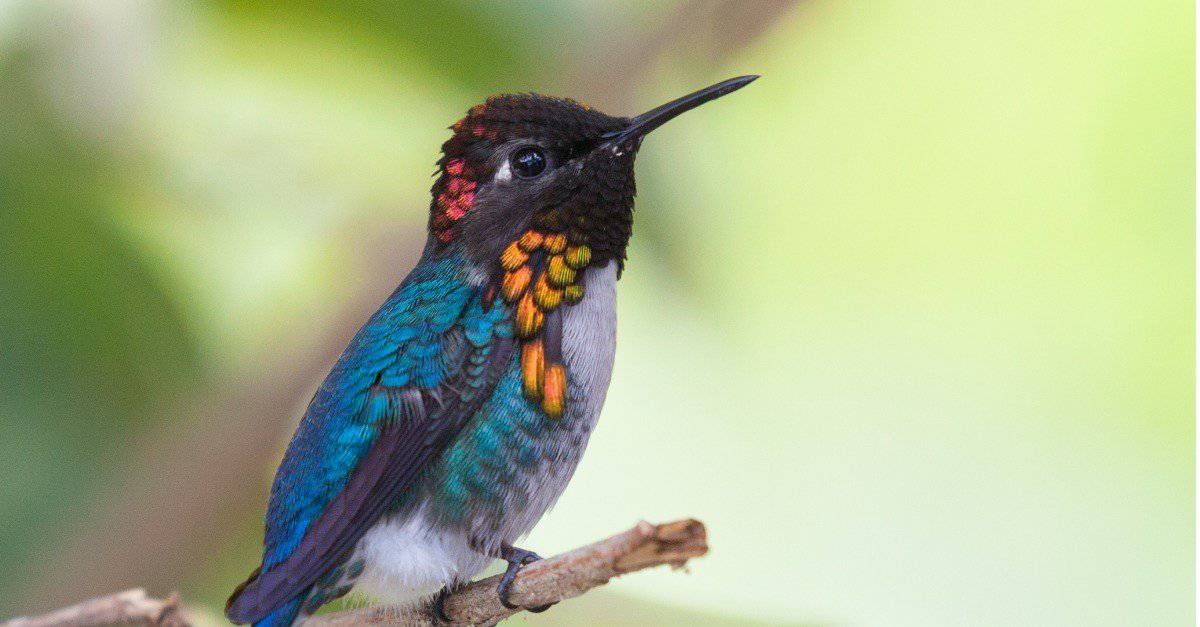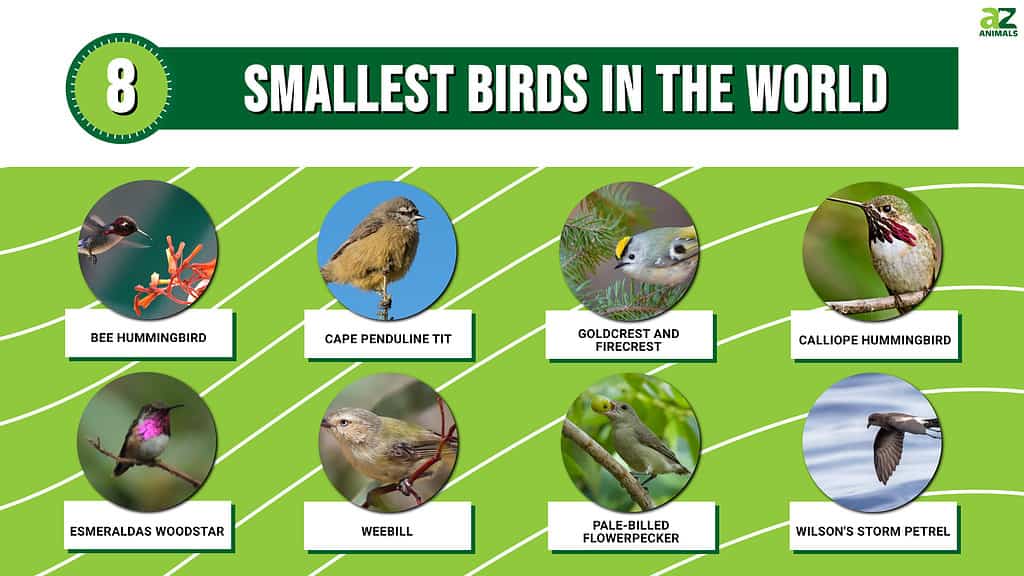
While birds are the remaining descendants of dinosaurs, most of them have maintained a more manageable size. The world’s largest bird species — the ostrich — can weigh in at nearly 300 pounds and achieve a towering height of nine feet. But the opposite end of the spectrum can be just as fascinating. These birds are measured in inches rather than feet and in miniature fractions of an ounce rather than pounds.
Somehow, these petite birds have managed to carve out unique niches in their ecosystems — and their limited reach generally suggests highly specialized evolutionary development. Their small size demands fewer resources for survival and offers them more opportunities to evade predators, while their slight weights allow them greater speed and mobility in the air. And while raptors tend to have the greatest speeds, small and light species like hummingbirds are still capable of an impressive range of motion.
Here’s everything you want to know about the tiniest bird species in the world and on each continent.
#1 Smallest Bird in the World: Bee Hummingbird
Average Length: 2.3 inches, Average Weight: .08 ounces
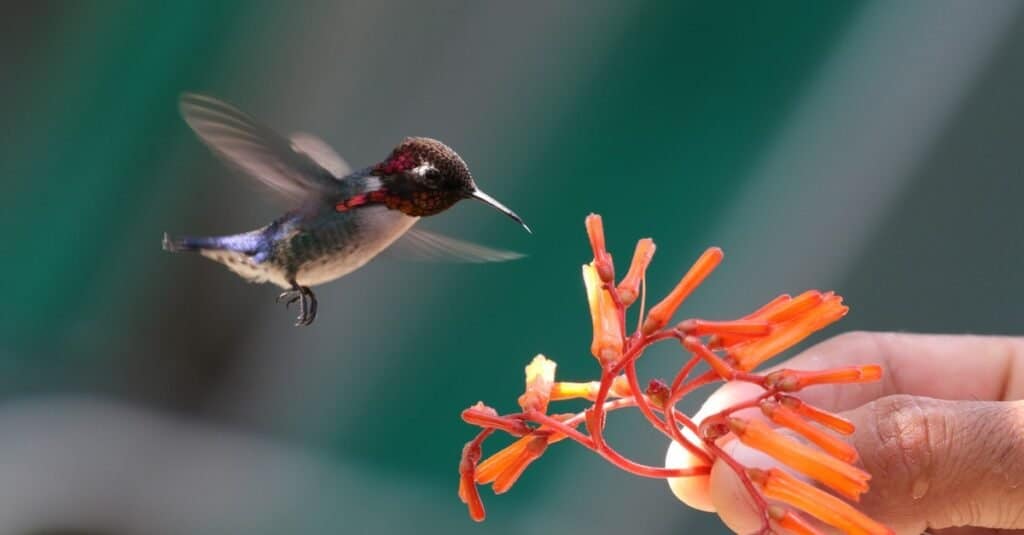
©James Bloor Griffiths/Shutterstock.com
Weighing in at barely two inches in height, the bee hummingbird takes the crown for the smallest bird in the world, even beating out other members of the notoriously small hummingbird family. Their eggs are about the size of a coffee bean and can comfortably be placed in a nest the size of a quarter. Keeping things in currency terms, each bee hummingbird weighs less than a dime. Or to put things in a more naturalist perspective, they’re only a tiny bit bigger than the average bumblebee. Unfortunately, that size also makes them a target for the same animals that would feed on bumblebees — most notably mongoose, wasps, frogs, and spiders.
The heartbeat of these miniature birds averages an astounding 80 beats per second, but they can more than double that in the height of the mating season. That’s energy that they can’t afford to waste, considering that the bee hummingbird has to feed on up to 1500 flowers a day for its sustenance. The bee hummingbird isn’t just difficult to find because it’s so small. It also requires taking a trip to Cuba. This isolated island nation is also the only known habitat of the species.
You can read more about the other types of hummingbirds here.
#2 Smallest Bird in Africa: Cape Penduline Tit
Average Length: 3.1 inches
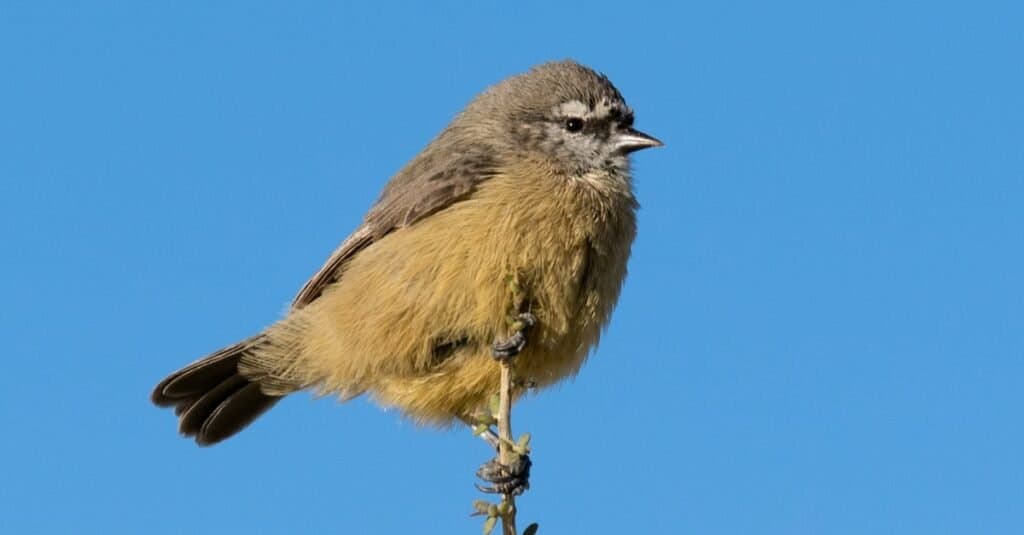
©Daniel Danckwerts/Shutterstock.com
The Cape penduline tit — sometimes known as the southern penduline tit — is far more prodigious than the world’s tiniest bird. Grayish-yellow in color, these birds extend from the tip of South Africa all the way up into Angola in the east and Zimbabwe in the west. They make their habitats in shrub plains and deserts, roosting and making their nests in high and thorny trees. Their nests are particularly ingenious, resembling a wastebasket and including a hatch that they can pull shut with a foot.
These roughly 3 inch long birds are unique in that they mate monogamously but gather into family units of three to four to help hatch the eggs and raise the children. They feed primarily on fruits, larva, and insects. They’re even known to raid meals from spiderwebs — a dangerous proposition given that spiders are often in the same weight class.
Click here to learn more about the tit, also commonly known as the chickadee.
#3 Smallest Bird in Europe: Goldcrest and Firecrest
Average Length: 3.5 inches, Average Weight: .21 ounces

©godi photo/Shutterstock.com
The goldcrest and firecrest share the title for the tiniest bird in Europe, but they actually have a lot in common. Both make their homes in coniferous forests but venture out of their isolated habitats in the winter to forage for food. They’re prodigious throughout the continent, although firecrests tend to be more predominant through southern Europe and even have habitats throughout north Africa.
In fact, their size may contribute to their success as a spacious. Measuring roughly three and a half inches, these birds are able to fit into spaces that predators would either overlook or not be able to reach. And when they do manage to get in the sights of an animal, their agility and small size make them often not worth the effort to pursue. Their eggs are even smaller, measuring a half-inch on average.
#4 Smallest Bird in North America: Calliope Hummingbird
Average Length: 3.3 inches, Average Weight: .1 ounces

©MTKhaled mahmud/Shutterstock.com
North America’s smallest bird is the calliope hummingbird, and their flight patterns take them all the way from Canada in the north to Mexico in the south. This elliptical migration pattern covers 5,000 miles — an especially impressive feat considering that these birds are only about 3 inches long. They typically fly low, keeping to flowers that would go unnoticed by larger and potentially aggressive hummingbird species.
But these birds can also be surprisingly fearless. When mating season comes around, they’ve even been known to chase after large and predatory birds like red-tailed hawks. In addition to being one of the tiniest birds, it’s also stunning to look at. Males have a distinct splash of magenta that covers their chin and chest, and they perform their mating dance in a distinct U-shape that can help clearly distinguish them from the many other species of hummingbird.
#5 Smallest Bird in South America: Esmeraldas Woodstar
Average Length: 2.5 inches
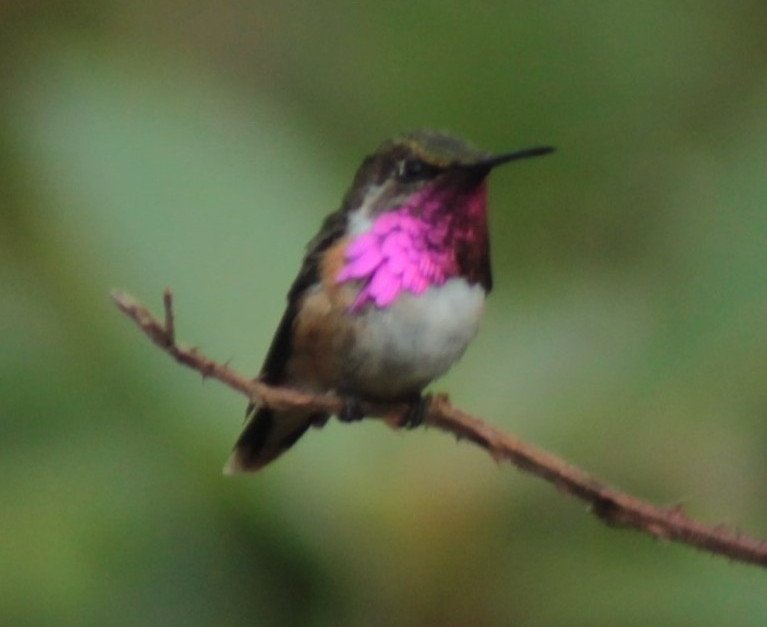
Researchers are still trying to figure out even the basic habits of Esmeraldas Woodstar — a highly localized breed of hummingbird that’s the tiniest in South America. Despite measuring only 2.5 inches in length, males of this species stand out due to their brilliant purple throats and the green markings along their bodies that resemble a tiny vest. These birds can be found in deciduous forests throughout Ecuador, and they have a preference for wooded areas at higher altitudes.
The problem is that they can be very hard to find in the wild. The species was thought to be extinct from 1912 until the next spotting of one in 1990 — but even now they’re rarely seen outside of breeding season. Where these birds go for the rest of the year remains a mystery for now. It’s unfortunately also an endangered species that’s threatened by the destruction of its habitats due to logging.
#6 Smallest Bird in Australia: Weebill
Average Length: 3.3 inches, Average Weight: .2 ounces
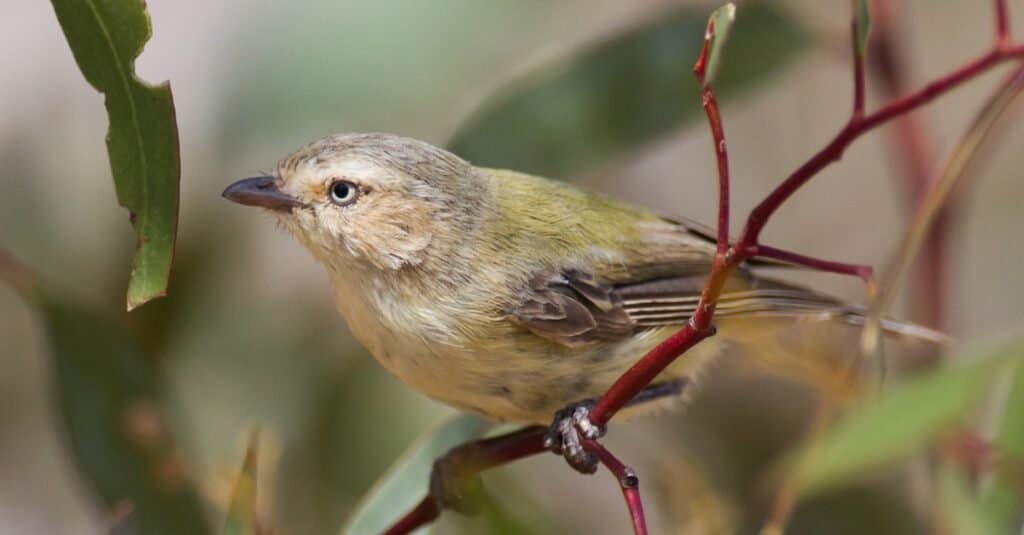
©Jukka Jantunen/Shutterstock.com
Australia may have a reputation for ecosystems occupied by large and deadly animals, but the petite weebill is proof that this continent is far more diverse than that. Its name is derived from its small size, but it also has a cry that sounds as if it’s saying “I’m a weebill”. These cries are loud and can be heard all year long in environments where this species can be found.
And while these birds may be restricted to the continent, they’re dispersed widely over the landmass, appearing practically everywhere except in particularly harsh sections of the interior. These birds display distinctive plumage that’s a combination of cream and a bright yellow, and they tend to make a home and stay there for the rest of their lives. Highly sociable birds, they’ll hunt in flocks — often including other bird species — and mating pairs will raise their young together.
#7 Smallest Bird in Asia: Pale-Billed Flowerpecker
Average Length: 3.1 inches, Average Weight: .2 ounces
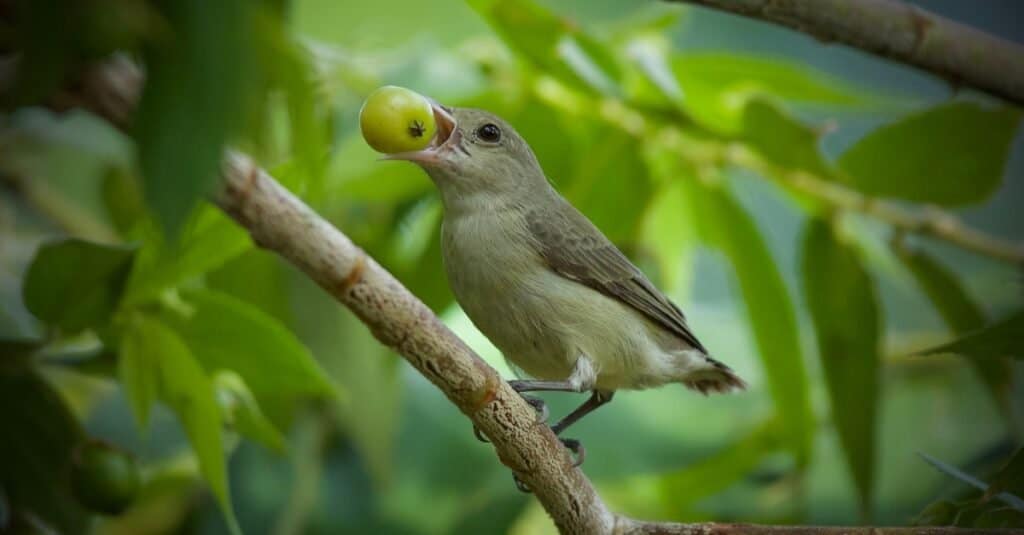
©VinaySagar/Shutterstock.com
Found throughout Myanmar, Bangladesh, and Sri Lanka, the pale-billed flowerpecker is largely unremarkable in appearance apart from its size. Found throughout the Indian subcontinent, this bird is a common sight throughout urban gardens and can be distinguished by its high-pitched singing voice. They have a particular fondness for poaching Singapore cherries from the gardens they forage from, though the biggest part of their diet consists of mistletoe species.
In fact, these birds have developed highly efficient digestive systems designed to help them handle the generally toxic mistletoe. The seed of the mistletoe berry passes through the body in three to four minutes and develops a coating that allows it to stick to trees. Mistletoe is technically a parasite that can leech nutrients from the trees it clings to, but it also serves a vital role in enriching the soil in surrounding environments. That makes the Pale-billed flowerpecker a critical member of the ecosystem.
#8 Smallest Bird in Antartica: Wilson’s Storm Petrel
Average Length: 6.8 inches, Average Weight: 1.4 ounces
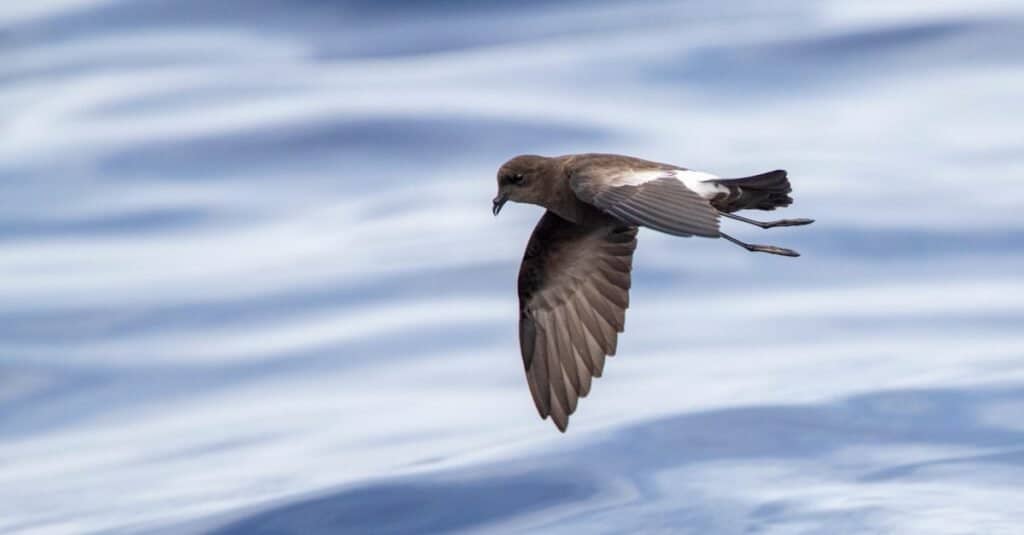
©Agami Photo Agency/Shutterstock.com
This species of storm petrel is significantly larger than the smallest birds from other continents, but the fact that it manages to breed at all in this harsh environment is a testament to nature’s resolve. It compensates for its small size by soaring through the troughs of waves — allowing it to migrate long distances despite its relatively weak capacity for flight.
Their travel patterns take them down the Atlantic — and they can be seen from the United States’ east coast all the way down to the most southern reaches of South America. Feeding primarily on crustaceans and small fish, this bird will simply hover over the waters and peck its beak at the surface until it manages to catch some prey.
Tiniest Birds of the World Summary
Below you’ll find a summary of the tiniest birds of the world.
| Rank | Smallest in | Bird Name | Size |
|---|---|---|---|
| 1 | The World | Bee Hummingbird | 2.3″ / 0.08oz |
| 2 | Africa | Cape Penduline Tit | 3.1″ |
| 3 | Europe | Goldcrest and Firecrest | 3.5″ / 0.21oz |
| 4 | North America | Calliope Hummingbird | 3.3″ / 0.1oz |
| 5 | South America | Esmeraldas Woodstar | 2.5″ |
| 6 | Australia | Weebill | 3.3″ / 0.2oz |
| 7 | Asia | Pale-Billed Flowerpecker | 3.1″ / 0.2oz |
| 8 | Antartica | Wilson’s Storm Petrel | 6.8″ / 1.4oz |
What Bird Lives the Longest?
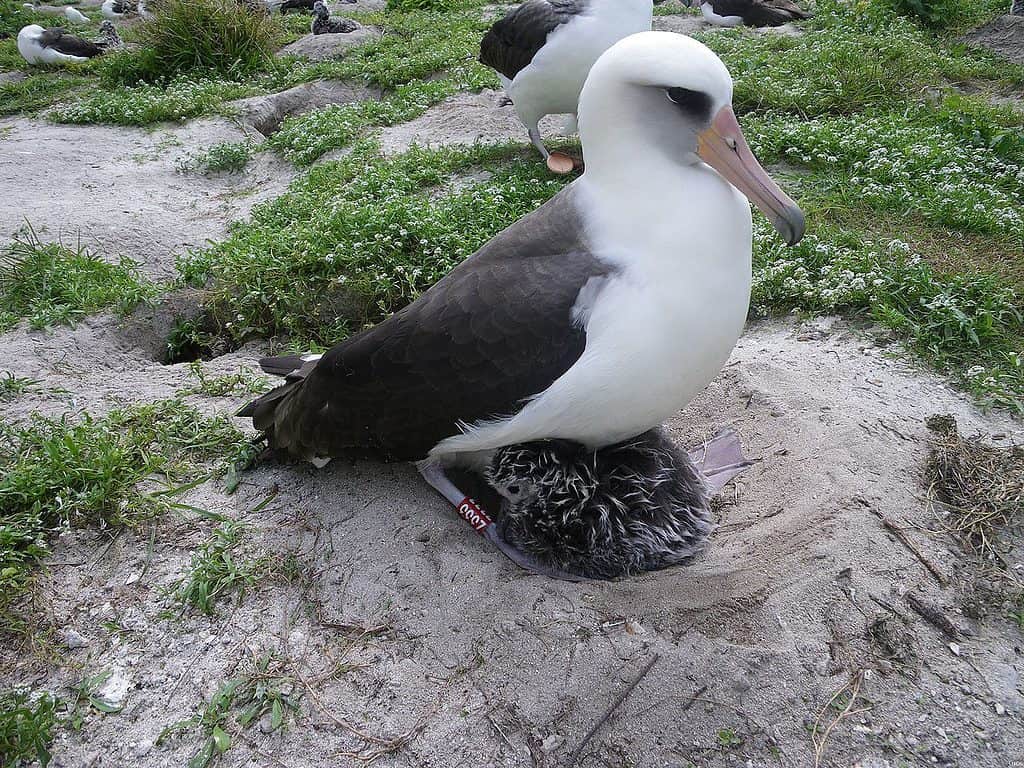
Wisdom the
albatross
is the oldest wild bird known to mankind.
©John Klavitter/U. S. Fish and Wildlife Service / public domain – Original / License
Do small birds live long? When it comes to flying creatures, it seems that bigger birds live longer. The oldest bird happens to be one of largest birds too, the Laysan Albatross. Wisdom is the oldest wild bird known to mankind; as of 2023, she is 72 years old! She is also the oldest banded bird. This beloved, feathered friend returns to Midway Atoll in Hawaii to lay eggs yearly. She has laid 50-60 eggs in her lifetime, with at least 30 fledgling chicks. Longevity may be due to its size. Some albatrosses can live to be up to 60 years old and weigh up to 28 pounds, which is the weight of a typical Thanksgiving turkey!
Thank you for reading! Have some feedback for us? Contact the AZ Animals editorial team.

